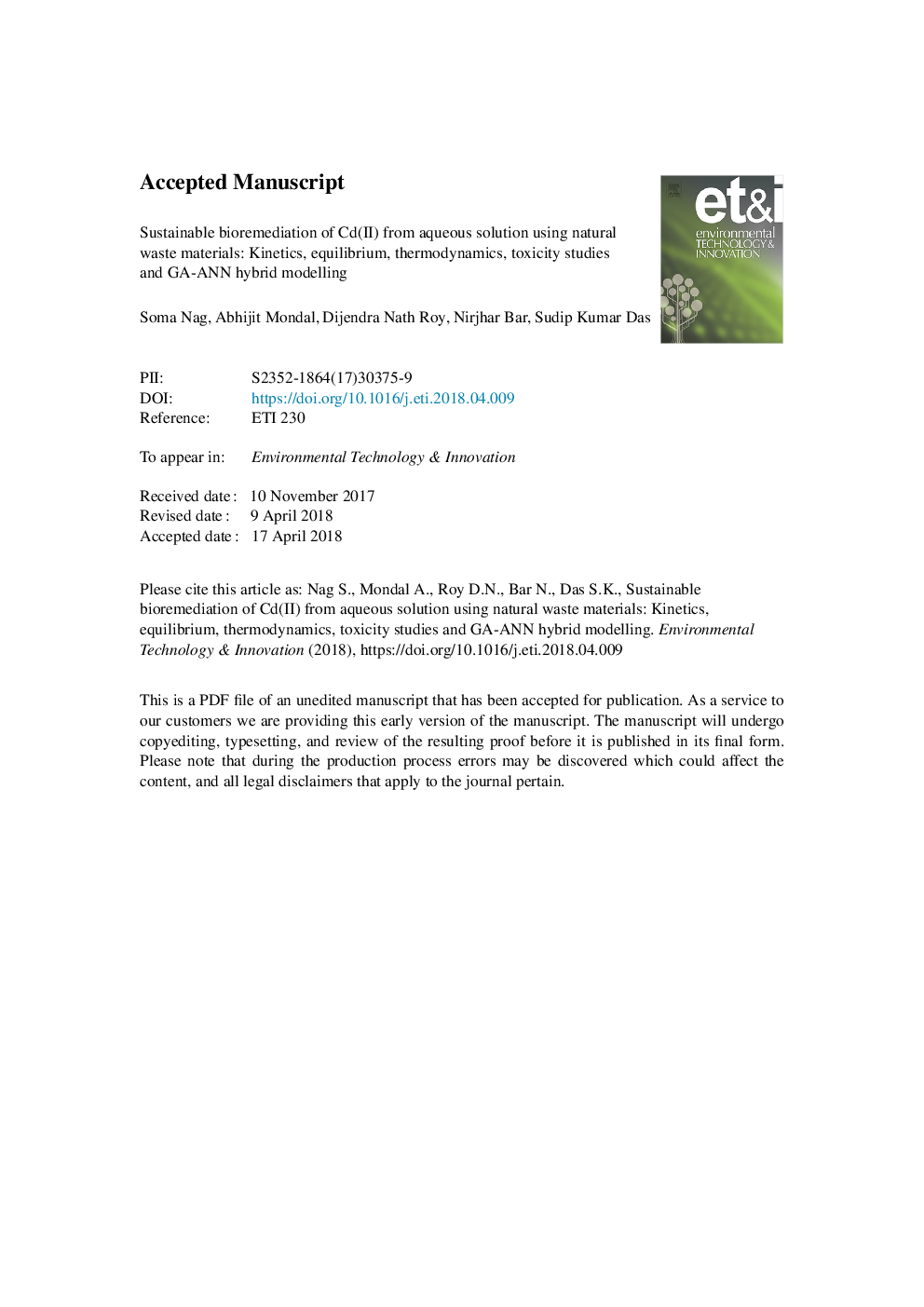| Article ID | Journal | Published Year | Pages | File Type |
|---|---|---|---|---|
| 8857887 | Environmental Technology & Innovation | 2018 | 54 Pages |
Abstract
The paper aims to provide efficient and affordable means for pollution abatement to MSME sector. In this work, the performance of some naturally available bio-waste materials, viz., leaves of jackfruit, mango and rubber plants have been attempted as biosorbents for remediation of toxic Cd(II) from aqueous solution. The biomasses have been characterized to find out the surface morphology, active surface area, presence of characteristic surface groups etc. which facilitate the biosorption process. Batch experiments are conducted to see the effects of operating parameters, viz., aqueous phase pH, initial Cd(II) concentration, adsorbent dose, time, temperature for Cd(II) ion removal onto these green biomaterials. The bioremediation mechanism was strongly pH dependent, spontaneous and followed second-order kinetics. Mass transfer, intra-particle diffusion and chemical adsorption controlled the process. Jackfruit leaf showed the best sorption performance by removing 98.72% Cd(II) from 20 mg Lâ1 aqueous solution at a dose of 5 g Lâ1 and the equilibrium adsorption capacity of 20.37 mg gâ1. The bio-sorbents performed satisfactory when tested against the industrial wastewater. The toxicity effect of the cadmium ion was analysed on living animal cell and they showed morphological alteration of RBC along with clumped appearance. The cell alteration intensity reduced with the treated effluent. The natural adsorbents have comparable adsorption capacity of other green adsorbents used by different researchers. Modelling of the complex sorption process has been performed using hybrid artificial intelligence (GA-ANN) technique to predict the metal ion removal efficiency accurately and obtained results have good agreement with the experimental data with correlation coefficient (R) ranging from 0.97-0.99. All these findings have manifested application of jackfruit, rubber and mango leaves for removal of Cd(II) ions in an environmentally sustainable and friendly way.
Related Topics
Life Sciences
Environmental Science
Environmental Chemistry
Authors
Soma Nag, Abhijit Mondal, Dijendra Nath Roy, Nirjhar Bar, Sudip Kumar Das,
